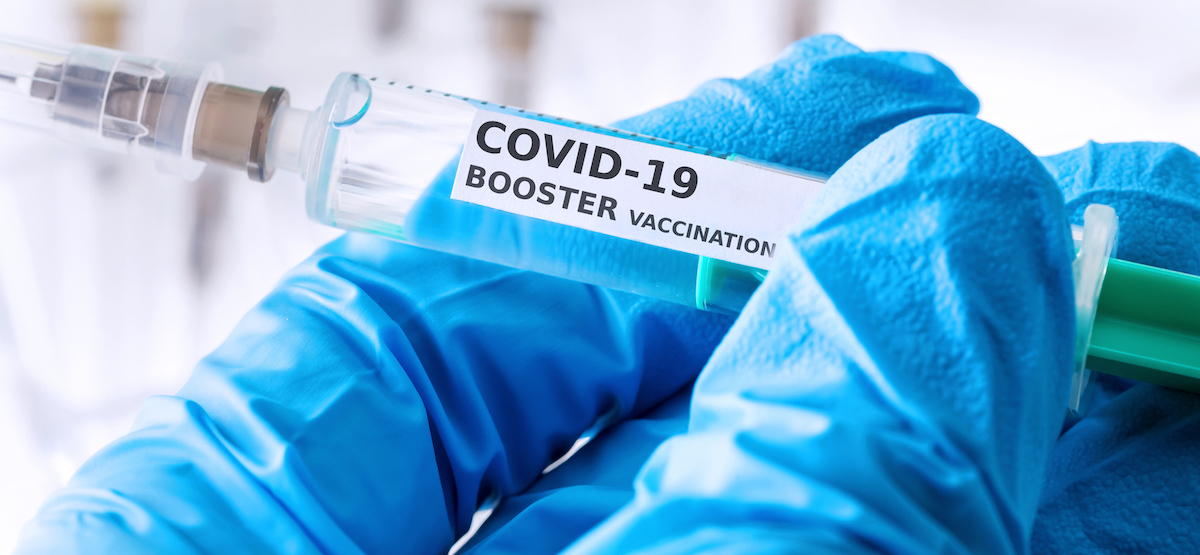<< Back
Why 77 Percent of Vaccinated Americans Say They Want a COVID Booster

August 26, 2021
Both Pfizer and Johnson & Johnson reported strong antibody response from COVID-19 booster shoots in clinical trial data this week as 77 percent of vaccinated Americans say they will get a booster if recommended, according to a Morning Consult poll.
Pfizer and its German partner, BioNTech, said it would submit their booster shot this week for Food and Drug Administration approval for people over 16 years old after Phase 3 trial data showed its vaccine, now called Comirnaty, produced more than three times the antibodies than a second dose. Johnson & Johnson said a booster shot in studies produced nine times more antibodies than its single-dose vaccine.
“The booster is boosting the existing immunity system against the current virus,” says Dr. Ulysses Wu, Hartford HealthCare’s System Director of Infection Disease and Chief Epidemiologist, “whereas there will be extra vaccines or extra doses needed if, let’s say, there’s a different variant and we find that our existing vaccines do not work well against that new variant.”
The CDC’s latest research showed vaccine effectiveness has dropped to 66 percent, from 91 percent, since the Delta variant became the dominant COVID-19 strain. It now accounts for 95 percent of all new cases in the United States.
The boosters under consideration will contain the same ingredients in the same formulations as the previous vaccines.
“It’s the same exact vaccine,” said Keith Grant, APRN, Hartford HealthCare’s Senior Director of Infection Prevention. “It’s the same shot.”
Here are the actual ingredients in a vaccine:
- Antigen: A vaccine’s active component that generates an immune response. The Pfizer-BioNTech and Moderna vaccines are the first to use messenger RNA, or mRNA, technology that includes the code of the specific virus antigen. This technology will also make it relatively easy to reformulate, with swift regulatory approval, for future variants more resistant than Delta to current vaccines.
- Preservatives: Prevent contamination after the vial is opened. A common preservative, 2-phenoxyethanol, has little toxicity in humans. It’s also found in baby care products.
- Stabilizers: Prevent chemical reactions within the vaccine. These can include sugars such as lactose or sucrose, amino acids, gelatin and proteins.
- Surfactants: Maintains a well-blended vaccine, with no sediment or clumping. These surfactants are often found in ice cream and other consumer products.
- Residuals: Trace amounts of non-active elements used in manufacturing, typically measured in parts per million or parts per billion.
- Dilutent: This is most of what you see in a vaccine vial — the liquid that dilutes the vaccine. Most often, it’s sterile water.
- Adjuvant: An ingredient, a tiny amount of aluminum salts, designed to enhance immune response by stimulating immune cells near the injection site or extending the time the vaccine spends at the injection site.
Booster shots are nothing new. Children need boosters for Hepatitis A, Hepatitis B, Haemophilus influenzae type B (Hib), measles-mumps-rubella (MMR), tetanus-diphtheria-pertussis (Tdap) and varicella. Teens and adults might need boosters for Tdap (every 10 years), shingles, pneumonia, varicella and MMR.
The more people who remain unvaccinated against COVID-19, the more likely additional and potentially more deadly variants will developi, requiring more booster shots for the already vaccinated. In the Morning Consult poll, 12 percent of vaccinated adults said they were were still unsure if they’d get a booster. Only 5 percent said they would not get a booster.
“It really depends on all of us,” says Dr. Wu. “We would like to get this to be a circulating disease, a seasonal disease, but we not at that point because, for some of us, it’s social behaviors, others because we haven’t been masking and others because we haven’t been vaccinated. Because of those three things, the virus continues to circulate. We are not in a position where we are tamping this down. In fact, it seems to be getting worse.”